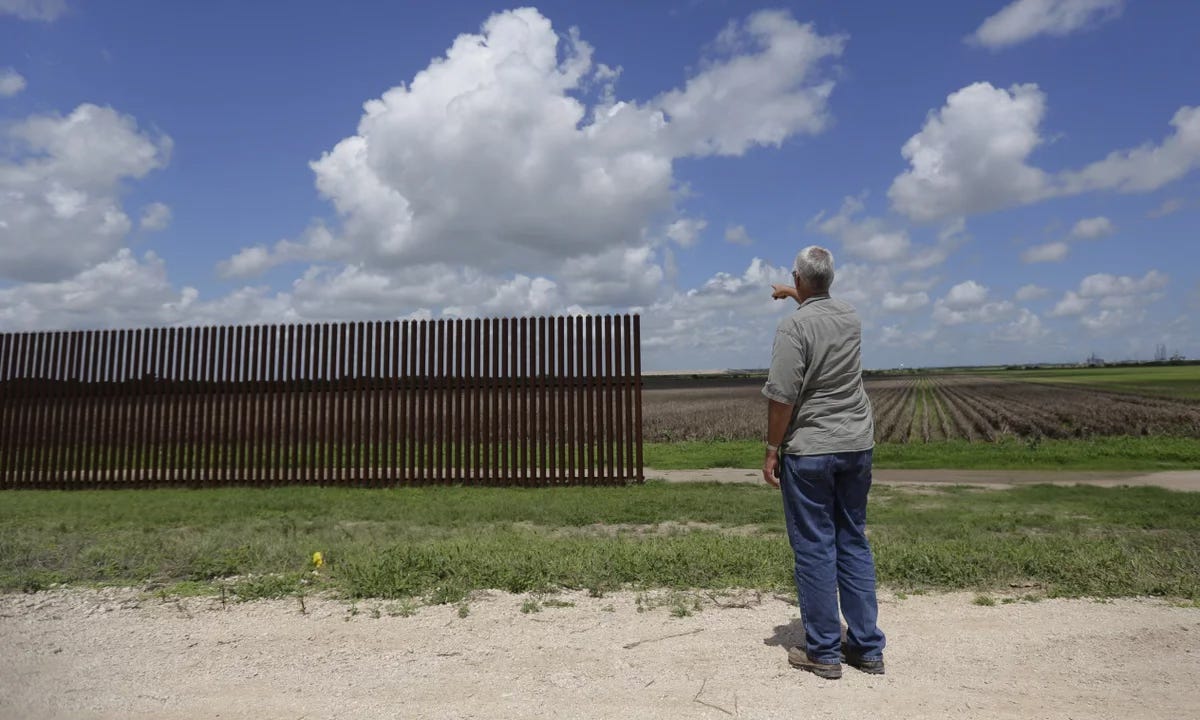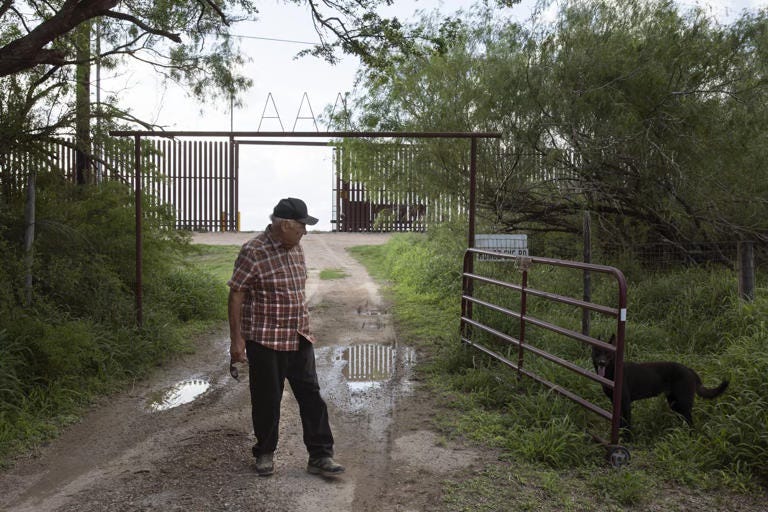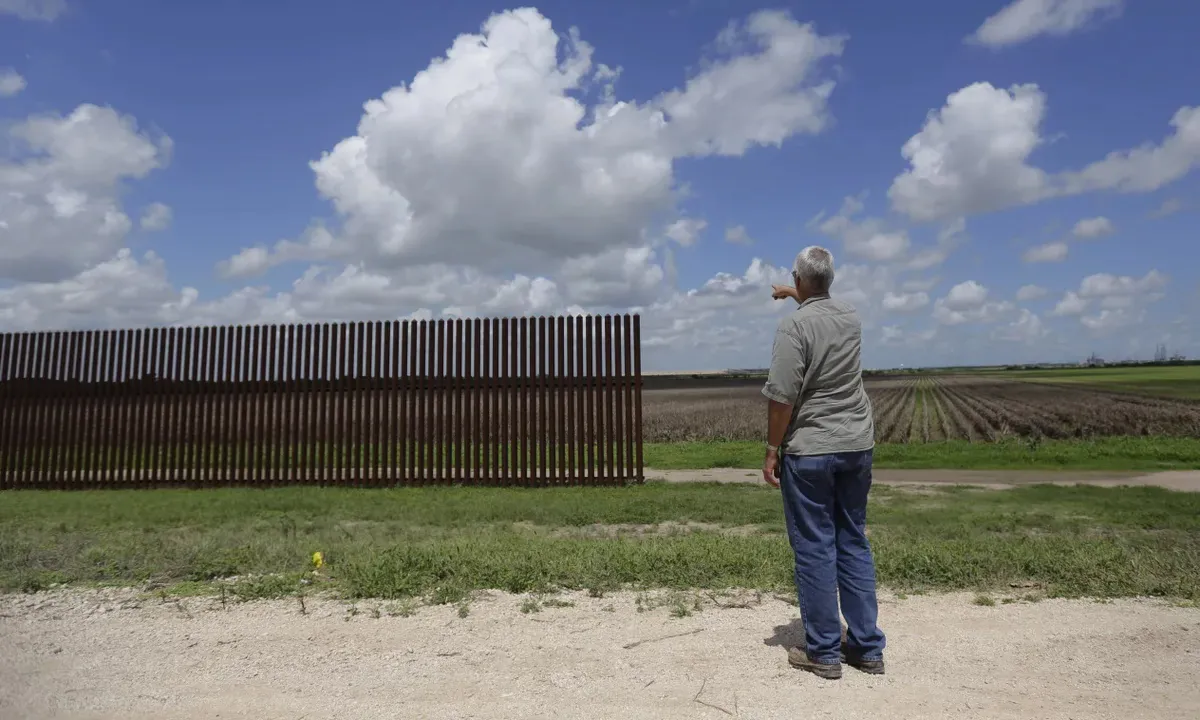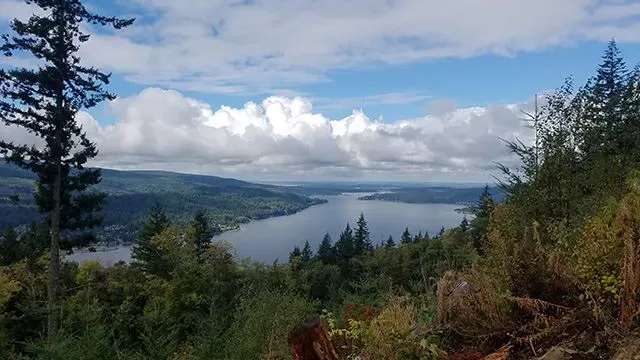Yanasa TV News
Protect the border, respect the land: a pro-security case for fair pay, narrower corridors, and real farm access in South Texas.
STARR COUNTY, Texas — Border wall construction is moving forward again in the lower Rio Grande Valley. In late August, federal officials cleared the way for about 4.7 miles of new, non-contiguous wall segments in parts of Hidalgo and Starr counties—30-foot steel bollards with patrol roads, drainage gates, and a cleared “enforcement zone.” A larger Starr County plan from last year covers additional miles in the same corridor.
But should the Federal Government be using eminent domain to take ranch land for it’s wall?
Two truths can live side-by-side: border security matters, and so does how the government treats working land.

What’s being built—and what that means on the ground
The wall footprint isn’t just steel. It includes roads, turnouts, gates, and vegetation clearing inside an enforcement zone that typically runs 50 to 150 feet wide.
- Simple math:
• 4.7 miles × 150 ft ≈ 85 acres of cleared corridor (≈ 28 acres if narrowed to 50 ft).
• A prior ~17-mile package in Starr County would be ≈ 309 acres at 150 ft (≈ 103 acres at 50 ft).
Not all of that is private farmland—some crosses refuge or state parcels—but enough does that growers and ranchers are being asked to give up strips of productive ground, reroute irrigation, and live with gates and patrol traffic threading through their fields.
“You can’t farm a fence line” isn’t just a slogan. A few tenths of an acre taken in the wrong place can strand a pump, break a pivot’s turning radius, or trap a block of acreage behind a locked gate.
Why the wall—and why now
Agents in the Rio Grande Valley sector describe the barrier as one piece of a broader “impedance and denial” system: walls, roads, lighting, and sensors that slow crossings and speed response. That’s a legitimate mission, and most producers we hear from aren’t anti-security.

The rub is timing and placement. Even as recent crossings have cooled from earlier peaks, new segments are moving, waivers have been signed to speed construction, and families are being told to accept quick deals that don’t reflect their operational reality.
The leverage problem: “quick-take” eminent domain
Under federal “quick-take” rules, the government can deposit an estimated value in court, take title and possession, and build now while the final price is argued later. In theory, owners still get “just compensation.” In practice, the bulldozers often arrive before a true, farm-savvy valuation does.
Two big consequences for growers:
- Low opening offers set the tone. Initial appraisals may miss on-farm realities—internal roads, irrigation lines, equipment turning paths, and the inefficiency created by carving fields into odd shapes.
- Severance damages are real but must be proved. The law recognizes damages to the part of the farm you keep (the “remainder”), but you have to document them. That takes time, experts, and money most families didn’t plan to spend this season.
Security and stewardship aren’t opposites
We can protect the border and treat working lands with respect. Here’s how to get there:
What the government should do
- Use the narrowest corridor possible. When the plan allows 50 feet, don’t clear 150 across irrigated fields without a compelling, site-specific reason.
- Engineer access up front. Put gate locations, key control, turnaround spots, and maintenance obligations in writing before construction starts.
- Pay for real operational impact. Base offers on independent, farm-savvy appraisals that account for irrigation reroutes, internal roads, fencing, drainage changes, and lost efficiency—not just square footage.
- Front-load mitigation. Provide funds for moving pumps, lines, and fences before work begins, so fields aren’t stranded mid-season.
What landowners can do (a quick checklist)
- Document the farm as it is today. Maps, drone stills, irrigation diagrams, harvest paths, and where heavy equipment turns. Date everything.
- Get an independent appraisal with an ag lens. Ask for a before/after valuation that captures severance damages and operational losses.
- List the fixes you need on paper. Gate count and placement, road specs, drainage, culverts, cattle guards, and who maintains what.
- Track every cost. Contractor quotes to move lines, pumps, fences, and roads. Keep receipts.
- Speak during the comment window. Submit fact-based, location-specific input—photos, maps, and operational notes tied to your parcel.
- Don’t go it alone. Visit with a condemnation attorney or a farm bureau contact. Quick-take shifts leverage; experienced counsel helps shift it back.
The bottom line
No one in agriculture should have to choose between national security and a workable farm. The federal government has the authority to build; with that power comes the responsibility to pay fairly, design smartly, and leave growers whole.
In the Rio Grande Valley, that starts with narrower corridors where possible, access that actually works at harvest time, and compensation that reflects the real cost of farming split-in-two ground. Security is a national priority. So is the land that feeds the nation.









